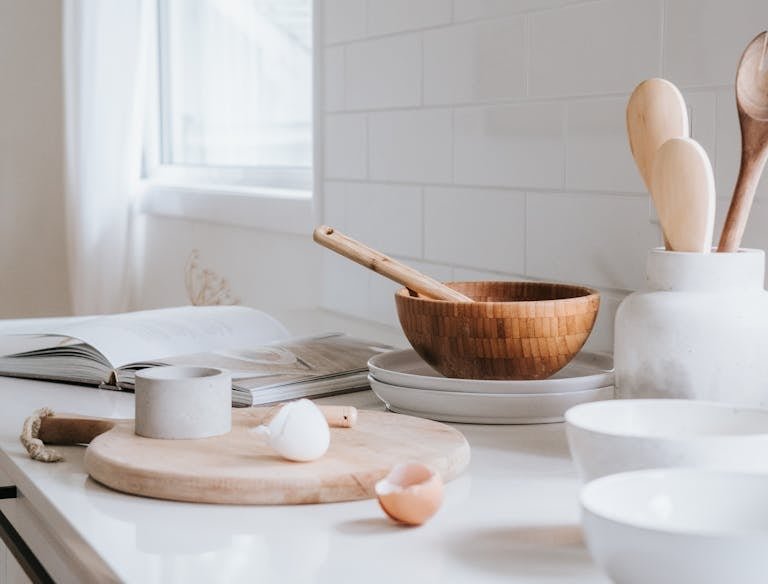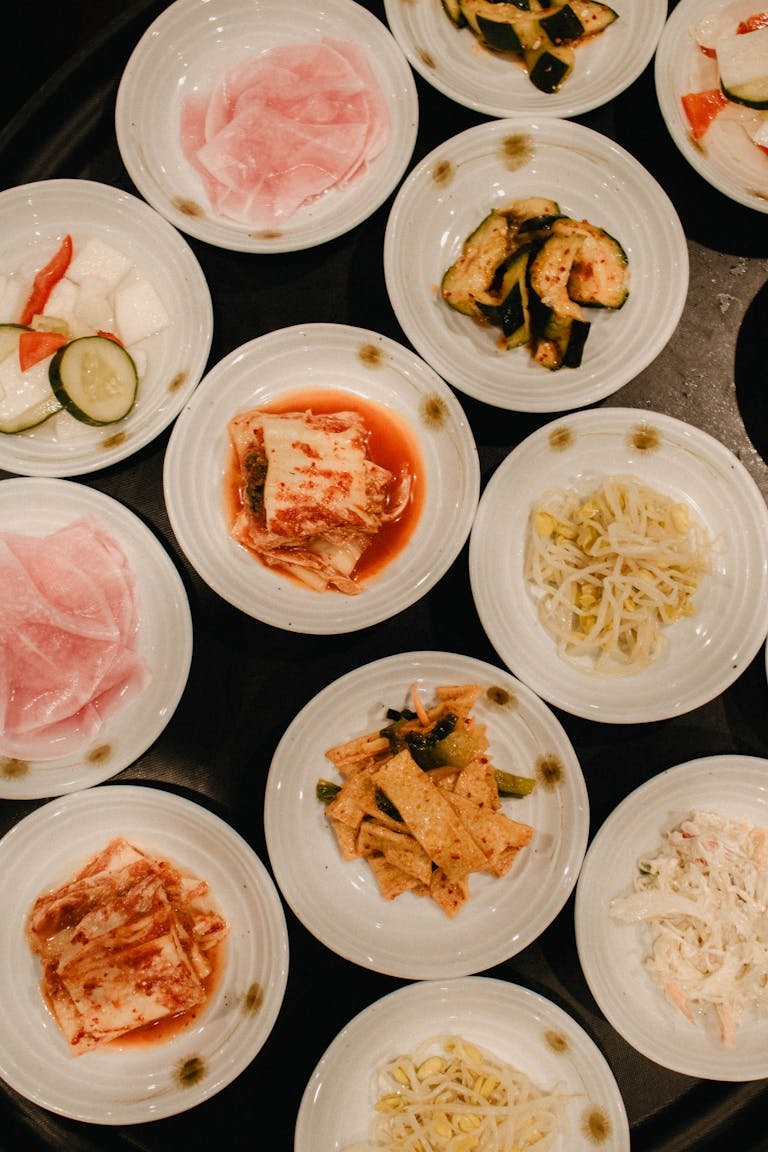How to Make Authentic Italian Pasta: Like a Real Nonna
Uncover the secrets to making authentic Italian pasta from scratch, like a true Italian grandmother. Master traditional techniques cherished through generations

I’ll always remember the day my best friends Nonna Maria took my flour-covered hands and said, “No, no, tesoro – you feel the pasta, you don’t just make it!” That moment transformed my understanding of pasta making.
Essential Ingredients for Authentic Italian Pasta
My first attempt at making homemade pasta was using all-purpose flour. It was a complete failure! The dough turned out all wrong, and Nonna couldn’t help but shake her head in disappointment. The key is starting with the right flour—tipo 00 flour, to be precise. It has a silky texture compared to regular flour, and it truly makes a world of difference.
I’ve discovered that fresh eggs are essential for egg pasta. And whatever you do, don’t use cold eggs straight from the fridge! There was a time when I was in such a rush that I skipped letting my eggs reach room temperature. The dough ended up so tough that it felt like I was kneading concrete! Now, I always make sure to take my eggs out the night before.
Now, let’s talk about salt—many people add it to the dough, but traditional pasta dough doesn’t require it! Save the salt for the cooking water instead. I’ve had some heated debates about this with fellow cooking enthusiasts, but after years of making pasta weekly, I can confidently say that Nonna’s method is the best.
The quality of your ingredients is far more important than any fancy techniques. I remember spending a lot on specialty ingredients when I first started, only to have a local nonna teach me that simple, high-quality basics work better than anything else.
Traditional Tools Every Nonna Swears By

Let me share a little story about my first wooden board (spianatoia)! I splurged on this beautiful, pricey olive wood board, thinking I was being all sophisticated. Then my friend’s nonna chuckled and showed me her simple wooden board that she’s had for 30 years, which worked way better. Sometimes, less really is more!
You really don’t need a pasta machine to whip up fantastic pasta—though I might not want to mention that to the upscale cooking store that convinced me to buy their priciest model! While machines can be handy, especially for those just starting out, there’s something truly special about rolling out pasta by hand with a classic wooden rolling pin.
Here are the essential tools I rely on for making pasta:
- A long wooden rolling pin (mine’s a bit worn, but it’s just right!)
- A solid wooden board
- A bench scraper (it has saved my countertops more times than I can remember)
- Clean cotton kitchen towels (nothing extravagant, just like Nonna uses)
I actually have two setups now—one with all my modern gadgets and another with just the basics. Honestly? The traditional tools come out on top almost every time.
The Sacred Process of Making Pasta Dough

Making the perfect flour well (fontana) is akin to crafting a small volcano on your countertop. I still laugh when I think about my first attempt—eggs spilling everywhere, flour spilling out, and complete mayhem on my kitchen surface! The key is to build the walls of your well higher than you might expect.
Let me guide you through my perfected method:
- Start with a mound of flour
- Form a deep well with tall walls
- Gently add eggs using a fork
- Slowly mix in flour from the inner walls
The kneading stage is where the real magic occurs. You’re not merely combining ingredients; you’re bringing something to life! For years, I thought I was kneading enough, until a true nonna showed me what real kneading looks like. My arms ached for days, but the pasta? Absolutely flawless!
Don’t rush the resting period. I used to be incredibly impatient (okay, I still am at times!), but allowing the dough to rest for at least 30 minutes truly makes a difference. It’s like a little pasta nap that helps the gluten unwind.
Rolling and Shaping Techniques

With my first experience with rolling pasta by hand, I thought I was nailing it until my Italian neighbor strolled by and burst into laughter! “Troppo spesso!” (too thick), she exclaimed. I was so embarrassed! But that moment taught me a crucial lesson about making pasta. The key to rolling it perfectly is what I like to call the “shadow test” – when you can almost see your hand through the pasta sheet, that’s when it’s just right.

Here’s a fun fact – different shapes need different thicknesses! For ages, I made my farfalle the same thickness as my fettuccine. No wonder they never turned out quite right! Each shape has its own character, as I like to say. Ravioli should be thin enough to see the filling through it, while pappardelle can be a bit thicker.
And don’t even get me started on my first attempt at tortellini. They ended up looking more like flattened dumplings than the cute little rings they were meant to be! Now I realize that folding tortellini is all about the thumb technique – something I figured out after hours of practice and plenty of “No, no, no!” from various nonnas.
Here are some common mistakes I’ve encountered:
- Is your dough too dry? Just sprinkle a little water on your hands while kneading (not directly on the dough!).
- Are your pasta sheets sticking? Use more bench flour, but make sure to dust off the excess before cutting.
- Are your shapes falling apart? You probably didn’t let the dough rest long enough.
Cooking Your Fresh Pasta to Perfection
Pay attention, because this is where even seasoned pasta makers can slip up! The biggest mistake I made was thinking that fresh pasta cooks for the same amount of time as dried. I once tossed a whole batch of perfectly good ravioli into boiling water and walked away for 8 minutes—when I returned, it was a pasta disaster!
Here’s my reliable method:
- Use much more water than you think you’ll need.
- Salt it until it tastes like the sea (yes, actually give it a taste!).
- Fresh pasta only needs 2-3 minutes—don’t walk away!
The trick to achieving perfectly al dente pasta? Pull out a piece and take a bite—if you see a tiny white dot in the center, it needs another 30 seconds. If it’s evenly colored but still has a slight bite, it’s just right!
What Are You Waiting For?
Making pasta like a true nonna goes beyond just following a recipe; it’s about feeling the dough and getting to know its unique characteristics. Trust me, through all my ups and downs, I’ve learned that every mistake offers a valuable lesson.
I’d love to hear about your own pasta-making experiences in the comments below. What techniques have worked for you? What culinary mishaps have you overcome? Share your stories—this is how we all learn and grow together in the wonderful tradition of pasta making.
And don’t forget what my favorite nonna always says: “La pasta è amore”—pasta is love. So pour your heart into it, enjoy the journey, and don’t shy away from making mistakes. Your perfect pasta is just waiting to be made!






